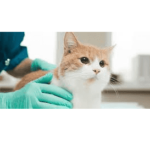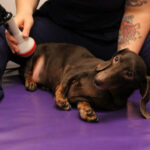Injuries to pets can come from a variety of sources – a nail, a stick, glass, another animal bite and more. When a wound occurs, healing has many paths that your veterinarian can take, but you only have one thing to worry about – get your pet to the veterinarian if you know there is a wound or suspect one (if your cat was just fighting with another, for instance).
Clients are often surprised by the level of care that goes into wounds, whether they are large or small. Severe wounds can be life threatening while other wounds may not be. Don’t be folled by the size of the wound; some small wounds can trick you into thinking your pet will be fine without treatment when they won’t be.
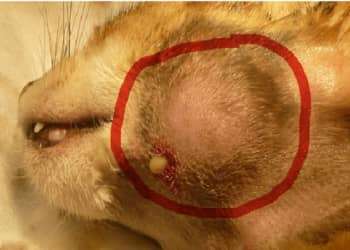
infected material to drain out of wound
The sooner a wound is addressed, the better. Deeply contaminated wounds or those greater than 8 hours old often need to stay open rather than be sewn shut, requiring the use of tie -on bandages and if closure is possible, drain placement will be needed and extra care on your end.
The most important thing for pet owners to understand is that wounds bigger than a small cut are almost always worse than they look. Oftentimes there is significant damage to the tissue below the wound, which you cannot see.
Bite wounds — whether a coyote bites a dog, a dog bites a cat, a cat bites a rabbit, or rabbits bite each other — always have more damage than what you can see. Mouths are filled with bacteria, which can easily cause an infection in bitten tissue, and almost always cause contamination.
Even if there isn’t much skin damage, there can be significant damage below the skin. Large powerful dog bites such as a pit bull or a rottweiler can cause crushing injuries and tissue death to a wound that initially doesn’t look bad.
In addition to crush injuries, dog bites can also cause lacerations and if it’s a big dog biting a smaller dog or other animal, the bite can penetrate into the chest or even the abdomen. Cat bites tend to be puncture wounds, but cats can also cause lacerations.
Puncture wounds are more likely to become infected than large lacerations. Typically, bites from dogs and cats are received on the neck, face, and legs. Neck wounds can be quite serious because trauma can occur to blood vessels, nerves, airways and the esophagus. Face bites can also result in issues with the eyes.
Impalements from sticks, rakes, and other sharp objects are puncture wounds that can go rather deep into the body. Usually, pets must be sedated or anesthetized for wound treatment as they otherwise wiggle too much and make a good evaluation of the wound very difficult. Remeber, these wounds are also painful!
The wound may or may not be sutured shut, which means being sewn back together. In certain cases, drains are used to steer any accumulating fluid or pus out of the body (see below).
Preventing Infection
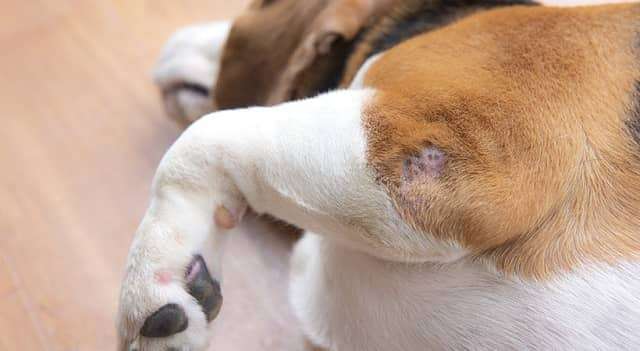
The most critical goal is to prevent an infection from occurring within the wound. Preventing infection is behind much of what happens because deep infections take more time and discomfort to treat than preventing them.
Dead or dying tissue has to be removed, a process medically referred to as debriding, before the wound can heal. In some cases, a small wound has to be enlarged so that the veterinarian can see what’s happening in the tissue below it. Then dead hair and other debris has to be cleaned out, and then the wound is disinfected.
Types of Wounds
Wounds can be classified as:
- punctures
- abrasions
- lacerations
Puncture wounds occur after something pokes a hole in the body, such as teeth from another animal, nails (toenails or house nails), sticks, porcupine quills, and bones.
A laceration is a tear that has jagged skin edges. If a dog bites down, it can break the skin and cause a puncture, but if he pulls or the victim pulls away, a laceration may be seen in addition to the puncture. Anything that can create a puncture can also cause a laceration if the skin gets pulled during the trauma.
An abrasion is caused by a rough surface – such as the road, teeth, or gravel – rubbing against the skin. Generally speaking, an abrasion is not as bad as a laceration.
Bites
Bite wounds are usually either lacerations or puncture wounds, which force bacteria into the tissue. Antibiotics are sometimes given because bite wounds are contaminated and can become infected even when the pet is on antibiotics. Giving antibiotics before there is an infection helps keep it from growing out of control.
Dogs tend to bite down, hold, and shake their victims, so they are most likely to cause a tear, but they can also cause punctures. Cat bites tend to be punctures only because their canines are a bit sharper than dogs’ and cats weigh less, so that even if the victim moves, they are less likely to cause a tear.
When Drains are Used
In healthy tissue, the skin attaches to the tissue underneath it so that no space exists between the skin and the tissue. When space becomes available between the skin and the skin tissue (referred to as dead space), fluid accumulates there.
That fluid will delay healing and can allow infection to take hold, resulting in an abscess. If the veterinarian expects fluid to accumulate in the dead space, a drain is placed so fluid and pus won’t build up, and the wound will heal faster.
Sedation is needed for drain placement and sutures, but often not needed for removal of the sutures. Typically, the drain does not exit from the wound but from a new incision.
The drains must be kept clean to prevent more bacteria from entering. Some injuries serious enough for a drain may require the pet to be hospitalized for a bit. Typically, drains remain in place for 3 to 5 days, but time frame will vary depending on the type of wound.
Your veterinarian will give you specific instructions on how to clean and care for the drains at home, and when to come back to have them removed. Because the idea is to keep the wounds from filling up with fluid, the drains are going to ooze: that’s their job.
You can keep the skin around the drain clean and free of any sticky or crusty goo by gently wiping off any excess fluid with room-temperature water on a clean cloth. That wiping will keep the wound clean, help new tissue grow, and lessen the possibility of infection.
Cleaning is usually uncomfortable if not painful, even if the drain itself is not bothering them, so it must be done gently. Don’t clean drains more than once or twice a day, depending on your veterinarian’s instructions.
The oozed fluid can drain wherever the pet goes because it’s a constant process. It may be helpful to keep the pet in a crate or bathroom until the drains are removed so that the mess is contained.
Sometimes a wound is in a place that doesn’t have enough skin for suturing, such as the face, or there’s been enough skin lost that suturing is no longer an option. Drains may be used in those cases.
Treatment
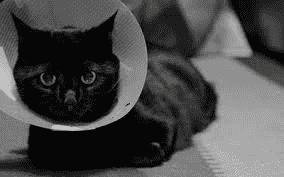
If you cannot get your pet into medical care within a few hours of being injured, the wound should not be closed without a veterinarian first removing the contaminated or dead tissue, a surgical process called debridement.
If possible, the edges of a wound will be sewn (sutured) together because that is the fastest way to heal. However, if there is a lot of contamination or the wound has a deep infection, the wound will be left open for topical treatment and to ensure drainage.
If the wound has abscessed (filled with pus), the pet will need to be sedated so the abscess can be lanced (poked open) and cleaned out thoroughly. Abscesses are a common result of cat bites to cats because we don’t see that there is a wound underneath their fur. With any wound, it’s important to prevent the skin from healing over too soon, especially with lanced and drained abscesses. The wound may open itself if it is closed too early.
Pain medicine should be prescribed. The pain will lessen over the next few days.
While this is harder than it sounds, don’t let your pet lick the healing wound or the drain. Your veterinarian should provide an e-collar so your pet can’t reach the wound. Typically, this will be a plastic cone; there are many types available at pet supply businesses that may be more comfortable for both you and your pet.
After a couple of days, if the wound looks worse than it did when the pet received it, contact your veterinarian.
